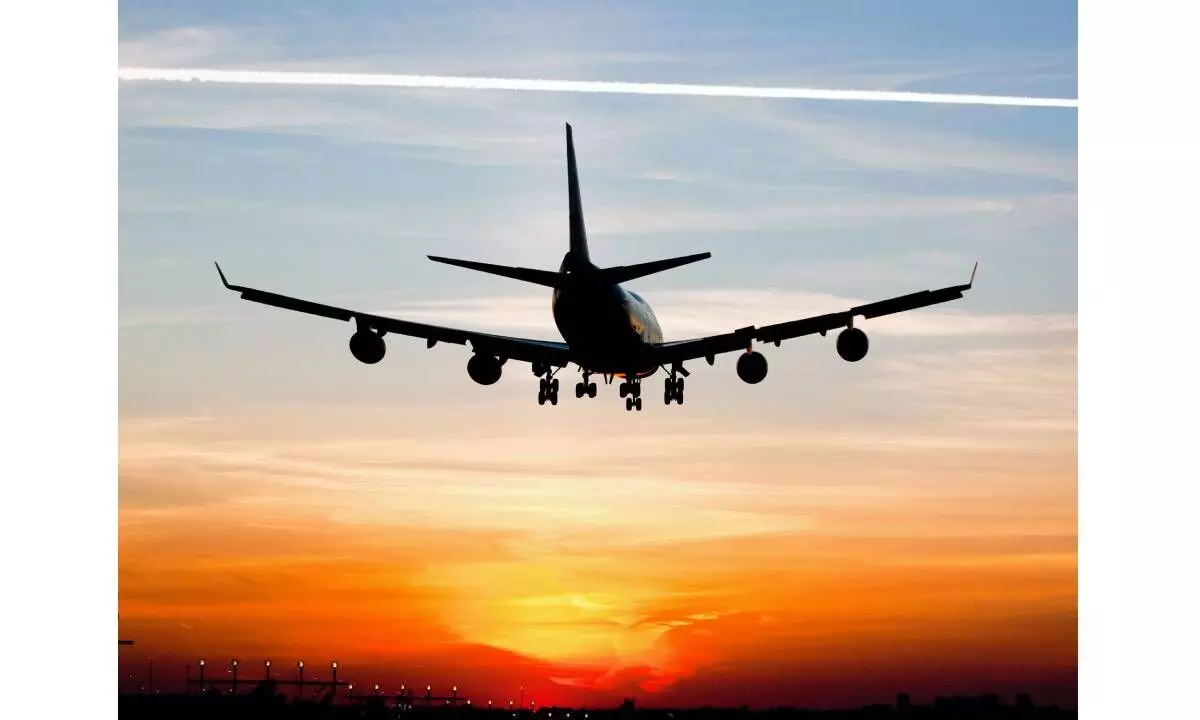India has to ponder deeply on the need for mega carriers
Currently estimated to be the fastest-growing aviation market globally, India is expected to fly 450 million passengers from over 200 airports by 2030, a growth of 300 per cent over the current 145 million passengers.
image for illustrative purpose

Currently estimated to be the fastest-growing aviation market globally, India is expected to fly 450 million passengers from over 200 airports by 2030, a growth of 300 per cent over the current 145 million passengers. Furthermore, the major home-grown carriers are projected to place mega orders for an additional 1,400 aircraft over the next five years, according to official data. Of course, mega carriers are needed to develop international routes, which provide innumerable opportunities that need to be nurtured and cultivated. Initially, you would want to have 90 per cent of your routes profitable so that you don’t burn cash. Once in a fair cash situation, you need to experiment with new routes and develop them within three years. Air India’s new order, which features 190 Boeing 737 MAXs and 210 Airbus A320s on the narrow body front will jumpstart Air India's efforts to in-house maintenance and bring down operational costs substantially. For wide bodies, another 20 787-9s are on their way, bolstering Vistara's existing order, as well as a whopping 40 A350s (six -900s and 34 -1000s), thereby marking the new flagships of the fleet.
The fleet commonality will be crucial to bringing profits back to the flag carrier and providing a consistent passenger experience onboard. The deals also reflect a new reality in the world of commercial aviation: future growth will be driven by emerging markets. Oliver Wyman, the global consultancy, forecasts India to grow its fleet by 8% over this time period, the fastest in the world. It is followed by Eastern Europe (6.3%), China (5.2%) and the Middle East (5.1%). The fastest growing air corridors are also in emerging markets, according to an examination of the Boeing Commercial Market Outlook through 2041. To be sure, on an absolute basis, Asia-Pacific, North America and Europe will remain the largest passenger markets globally with the largest fleets, but China is on track to surpass the United States as the largest air travel market in the world by 2030. India, the third largest aviation market, lags far behind China, but represents a faster growth story given its youthful demographics, growing middle class and the rising economy.
India has pledged to spend $12 billion to upgrade and expand its airports and is targeting a more than doubling of passenger capacity from 192 million to 420 million passengers over the next four years, which makes for a highly ambitious vision. Gulf-based carriers account for more than one out of every four international passengers that land in India. Emirates Airline alone accounts for about 10% of all international passengers that land in India. These carriers also account for roughly 27% of all international passengers that depart India. Will Air India take a bite out of the Middle East carrier’s lucrative India international routes? While Air India, including the large aircraft orders may create some additional competition for Gulf carriers, they are unlikely to significantly shrink the lucrative Indian market of the Gulf carriers. If air travel forecasts are bang on, then the global air travel revolution that the world experienced before the pandemic could be well on its way back to normalcy. An Airbus forecast sees some 7.8 billion passengers flying annually by 2040.

